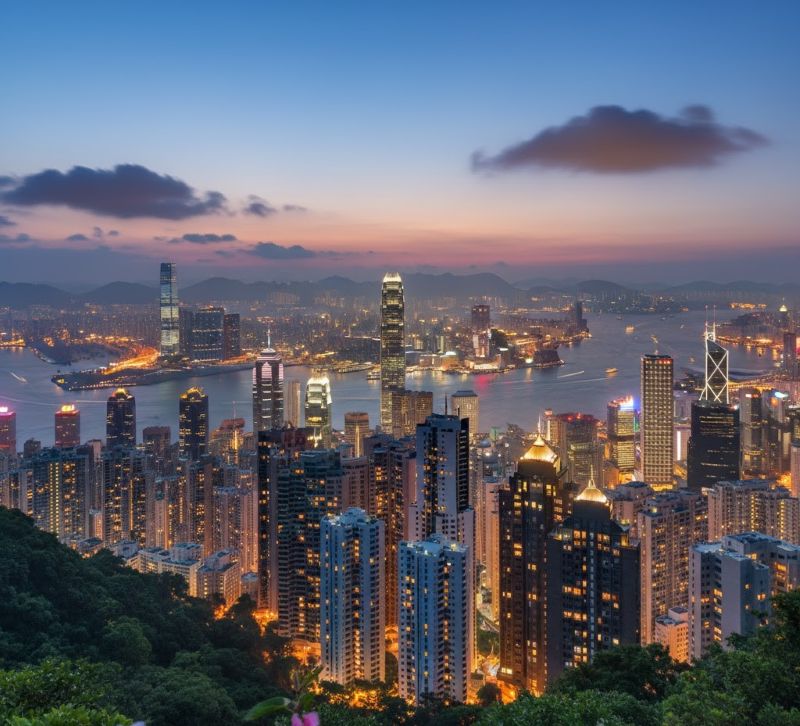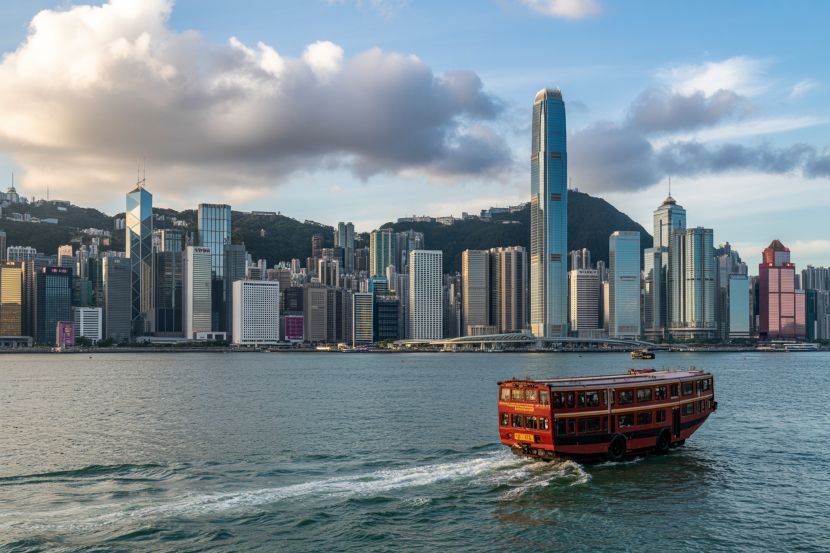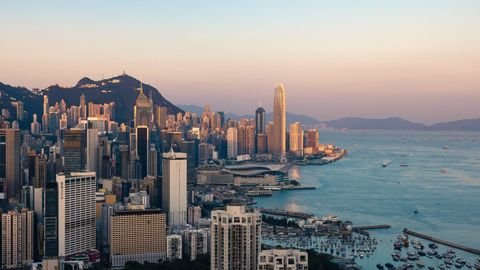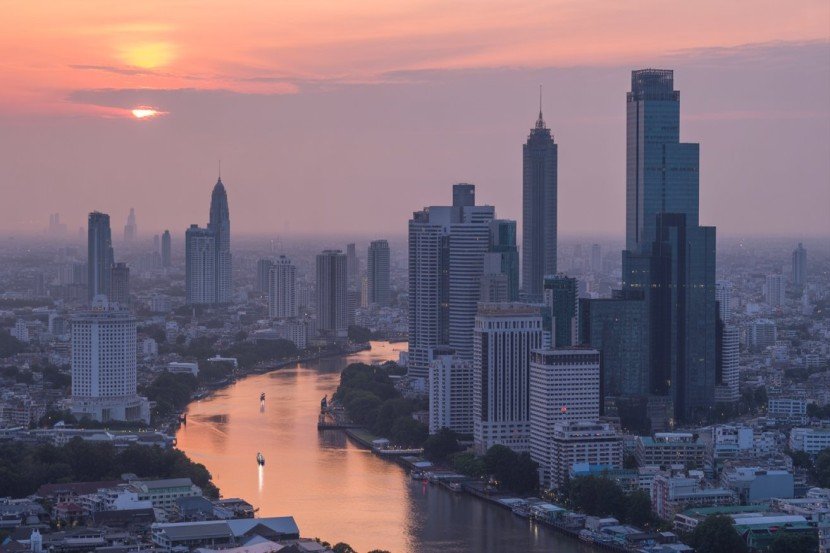Published on
October 19, 2025

In recent years, Hong Kong has become a prominent leader in a rapidly growing trend within the global travel industry: movie-related tourism. This surge in popularity can be seen through the impressive 35% increase in Japanese visitors recorded between January and August of a particular year. This growth underscores the powerful influence of cinema in shaping travel choices. Known for its iconic landmarks and cinematic legacy, Hong Kong has moved beyond conventional sightseeing. The city now offers travelers the opportunity to connect with it on a deeper, more emotional level through the films that have showcased its vibrant streets and architectural landmarks.
The increasing appeal of movie-related tourism in Hong Kong has been propelled by the city’s strategy to open up previously restricted film locations to the public. By doing so, programs like the Heritage Fiesta allow travelers to explore these iconic sites, offering an enriching understanding of the stories and histories embedded in them. Through these efforts, Hong Kong has successfully positioned itself as a destination where cinema, history, and culture converge, offering visitors an opportunity to experience the city in a way that goes beyond typical tourism.
Opening Historical Sites to the Public
One of the key drivers behind Hong Kong’s rise as a movie-tourism destination is the Heritage Fiesta, a program that has opened several historically significant sites to the public. Previously inaccessible, these sites allow visitors to explore spaces rich in history and cinematic significance. A prominent example is University Hall, located at the University of Hong Kong. Featured in the 1990 film “Kawashima Yoshiko”, the University Hall was opened to the public for the first time on October 4. This historic event was a significant achievement, attracting both film lovers and history enthusiasts, eager to experience the castle-like architecture and rich heritage of the building.
The University Hall boasts a history that spans several decades, with its origins in the 1860s during British colonial rule. Originally built as a residence for a Scottish trader, it was later transformed into a monastery by French missionaries. The University of Hong Kong took ownership of the property in 1956. During World War II, the Japanese military occupied the building, using it as a lodging facility. Today, the building functions as a male student dormitory, but the Heritage Fiesta provided a rare opportunity for the public to explore parts of the building that are usually off-limits, such as the kitchen, laundry rooms, and gymnasium. This allowed visitors to step into the past and experience life within a historical monument.
Reviving Hong Kong’s Cinematic Heritage
The opening of these historical sites aligns with Hong Kong’s larger effort to reignite interest in its cinematic past, particularly the 1980s and 1990s, which are often regarded as the golden era of Hong Kong cinema. Films like “Kawashima Yoshiko”, starring the celebrated actors Anita Mui and Andy Lau, are integral to this era and continue to hold a special place in the city’s cultural identity. Despite recent challenges, particularly due to censorship measures introduced following the 2020 national security law, Hong Kong’s film industry continues to produce films that captivate both local and international audiences. While several films have faced edits or bans due to national security concerns, the film industry remains an essential part of the city’s cultural landscape.
The ongoing interest in films from the 1980s and 1990s highlights cinema’s enduring role in shaping Hong Kong’s identity. These films often feature action-packed narratives that capture the city’s urban vibrancy and the struggles of its citizens. For travelers, visiting the filming locations allows them to connect with the cinematic history of Hong Kong, offering a unique opportunity to experience the city’s culture in a way that goes beyond just visiting historical landmarks.
Modern Cinema Driving Tourism Growth
In addition to the lasting popularity of classic films, Hong Kong’s modern film industry has also played a significant role in the rise of movie-related tourism. A prime example of this is the 2024 drama “The Last Dance”, which explores themes of mortality and the funeral industry. The film was a major box-office hit, contributing to the creative resurgence within Hong Kong’s filmmaking scene. One of the film’s prominent filming locations, the Tung Wah Coffin Home, has been incorporated into the Heritage Fiesta, allowing visitors to take exclusive tours of this location and experience the connection between cinema and real-world landmarks.
By incorporating filming locations into tourist programs like the Heritage Fiesta, Hong Kong has sparked renewed interest among travelers, particularly those eager to engage with the emotional and cultural narratives embedded in the films. These immersive experiences bridge cinema and history, giving visitors a deeper understanding of the city’s cultural heritage.
Key Features of Film Tourism in Hong Kong
As Hong Kong continues to build on its successful model of movie-related tourism, several key features define this emerging trend:
- Authentic experiences: The integration of heritage and modern storytelling through films helps tourists forge a meaningful connection with the city.
- Free guided tours: These are available in both Cantonese and English, making the experience accessible to a wider range of international visitors.
- Pre-registration: Visitors are encouraged to register in advance for certain sites, ensuring better crowd management and a safer, more organized experience.
These features underscore the fact that the Heritage Fiesta is more than just an opportunity to visit historical sites; it provides tourists with the chance to engage with Hong Kong’s cultural narrative, creating lasting, meaningful experiences.
The Surge in Japanese Visitors
A particularly striking aspect of movie-related tourism in Hong Kong has been the noticeable increase in Japanese visitors. This surge is directly linked to the success of the 2024 action film “Twilight of the Warriors: Walled In”, which dramatizes life in the Kowloon Walled City, a once-thriving urban area in Hong Kong that was demolished years ago. The film’s compelling storyline, set within the Kowloon Walled City, has inspired thousands of Japanese tourists to visit the actual filming locations or the recreated sites depicted in the movie. Although the Kowloon Walled City no longer exists, films like “Twilight of the Warriors” have brought it back to life in the minds of the public.
To accommodate the growing number of Japanese visitors, Hong Kong’s authorities and the filmmakers set up a special exhibition that recreated the film sets. This immersive experience allowed fans to step directly into the world presented in the film, strengthening their emotional connection to the cinematic world. Between January and August of the given year, over 470,000 Japanese visitors arrived in Hong Kong, marking a 35% increase from the previous year. This surge highlights how film tourism has become a key driver of Hong Kong’s tourism growth.
The Global Impact of Movie-Related Tourism
The rise of movie-related tourism in Hong Kong is not an isolated phenomenon but rather part of a larger global trend. Today’s travelers are seeking more than just traditional sightseeing; they want to connect with the history, culture, and stories of the places they visit. Film tourism offers a unique opportunity for cities to leverage their cinematic heritage by transforming historic landmarks into destinations for both movie lovers and history buffs alike.
This growing trend presents a significant opportunity for global destination marketing. Film tourism not only increases visitor numbers but also encourages tourists to stay longer and engage more deeply with the destination. By combining cultural significance with emotional appeal, cities can create sustainable models for attracting tourists year after year. Hong Kong has shown how the combination of cinema and heritage can raise a city’s global profile, offering visitors a richer and more meaningful experience.
For Hong Kong, this model has proven highly successful and could serve as a blueprint for other cities looking to tap into the power of cinema and heritage tourism. As film tourism continues to grow, it presents exciting opportunities for the global travel industry, especially as the world recovers from the impacts of the pandemic.
A New Chapter for Global Tourism
In conclusion, Hong Kong’s Heritage Fiesta is far more than just a cultural event; it represents a seamless fusion of cinema and heritage, providing a completely new way for visitors to connect with the city. By embracing movie-related tourism, Hong Kong has demonstrated how cities can capitalize on their cinematic legacies to offer meaningful and immersive experiences for tourists. As more destinations begin to adopt similar strategies, the travel industry may enter a new era where history, culture, and cinema combine to provide travelers with richer, more fulfilling experiences.
Through this innovative approach, Hong Kong has shown that cinema and heritage can work together harmoniously, giving visitors a chance to connect with the past while enjoying the dynamic, modern landscape of the present. This shift not only supports Hong Kong’s economy but also reshapes global tourism, making it more engaging, accessible, and culturally enriching for visitors worldwide.









